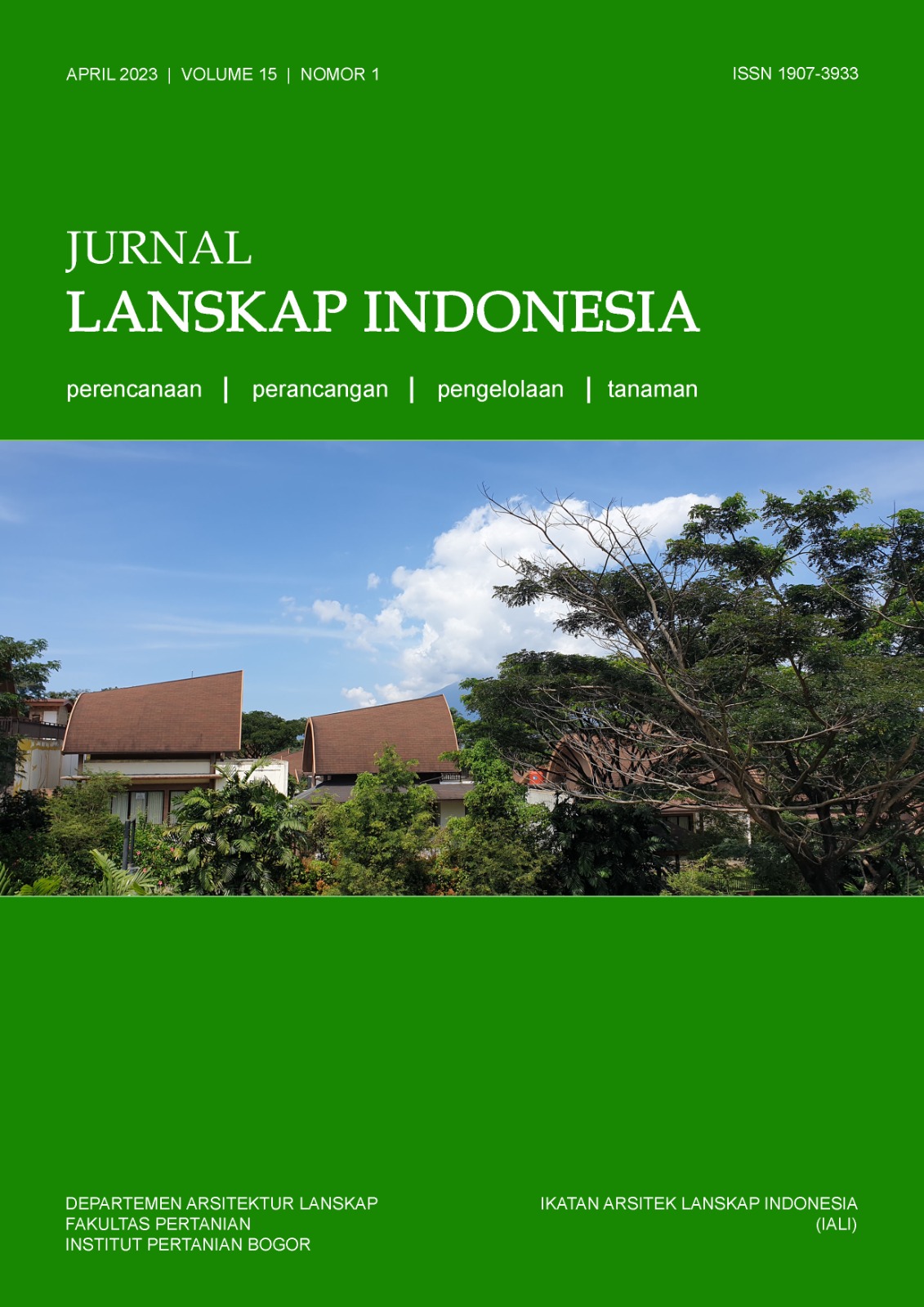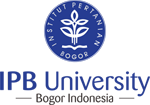Kajian Daya Dukung Atraksi Wisata di Taman Wisata Alam Lembah Harau Sumatera Barat
Abstract
The Harau Valley Natural Tourism Park is one of the most popular destinations for local, domestic and foreign tourists in West Sumatra. The number of Harau Valley Natural Tourism Park tourists in 2018 increased by 37% from the previous year, which was 358,827 tourists. Increasing demand for tourism objects, especially in the Harau Valley Natural Tourism Park will unavoidably leads to further development of the park for tourism activities. Thus, consequently it will affect the park and its surroundings ecologically, socially, and economically. Studies on the carrying capacity of tourist areas are needed to minimize the impact caused by tourism activities. The purpose of this study is to identify and analyze the carrying capacity of the tourist area in the Harau Valley Natural Tourism Park. Data was collected using a survey method, namely field observations and literature studies which were then analyzed using the Douglass 1975 formula to identify carrying capacity for each tourist attraction. The results of the analysis of the carrying capacity of each tourist attraction were (1) natural recreation 85,056 people/year, (2) Boating is 7,802 people/year, (3) Swimming is 12,217 people/year, (4) Camping is 25,460 people/year, (5) Education and Research is 99,744 people/year, and (6) Photo hunting is 84,890 people /year. Hopefully, the results of the study can be used as future considerations in the development of the Harau Valley natural tourism park.
Downloads
References
Anggraini, R. dan Nurhayati, H.S.A. 2011. Studi Potensi Lanskap Bersejarah untuk Pengembangan Wisata
Sejarah di Kota Bengkulu. Jurnal Lanskap Indonesia, 3(1). Https://doi.org/10.29244/jli.2011.3.1.%p .
Ari, D.C. 2019. Desain dan Pengembangan Ekowisata Mangrove Gelagah Wangi Istana Tambak Bulusan Demak Jawa Tengah. [Tesis}. Bogor (ID): Institut Pertanian Bogor.
Asif, M., Bangus. 2013 Carrying Capacity Assessment for the Promotion of Ecotourism in Bangus Valley : a
Future Tourist Destination of J & K – India Shazia Lone, Int. J. Sci. Res, 2(3): 187–188.
Bhardwaj, S.K., Aditya, Sharma, A., Rakesh. 2019. Impact Assessment of Ecotourism Activities in Mid Hills of Himachal Pradesh, India. J. Pharmacogn. Phytochem, 1(1):317–321.
[BKSDA Sumbar] Balai Konservasi Sumberdaya Alam Sumatera Barat. 2018. Rencana Pengelolaan Jangka Panjang Taman Wisata Alam Lembah Harau. Padang (ID): Balai Konservasi Sumberdaya Alam Sumatera Barat
[BPS] Badan Pusat Statistik Lima Puluh Kota. 2007. Kecamatan Harau Dalam Angka. Kabupaten Lima Puluh Kota.
[BPS] Badan Pusat Statistik Lima Puluh Kota. 2019. Kabupaten Lima Puluh Kota Dalam Angka. Kabupaten Lima Puluh Kota (ID): Badan Pusat Statistik Lima Puluh Kota.
Douglass, R.W. 1975. Forest Recreations, Second Edition, Pergamon Press Inc. New York.
Elmiwati. 2015. Studi Identifikasi Spesies Kantong Semar (Nepenthes Spp.) di Kawasan Cagar Alam Lembah Harau Kabupaten Lima Puluh Kota Sumatera Barat. J. Phot, 6(1):107–110.
Ismawati, I., Fitrianti, S., Sillia, N., Fauzi, N. 2017. Strategi Pengembangan Taman Wisata Lembah Harau
Sumatera Barat Berbasis Kearifan Lokal: Tungku Tigo Sajarangan. Agriekonomika J. Sos. Ekon. dan Kebijak. Pertan, 6(2):151–163.
Manning, R.E. 2007. Parks and Carrying Capacity: Commons without Tragedy. Washington: Island Press.
Muda, I. 2010. Strategi Pengelolaan Taman Wisata Alam Lembah Harau Kabupaten Lima Puluh Kota Provinsi Sumatera Barat [Tesis]. Bogor (ID): Institut Pertanian Bogor.
Nugraha, H.P., Indarjo, A., dan Helmi, M. 2013. Studi Kesesuaian dan Daya Dukung Kawasan untuk Rekreasi Pantai di Pantai Panjang Kota Bengkulu. Journal of Marine Research. 2(2): 130-139.
Peran, S.B., Abidin, Z., Badaruddin. 2021. Persepsi Masyarakat Desa Hutan Lahan Basah Terhadap PerubahanFungsi Cagar Alam Menjadi Taman Wisata Alam. Jurnal Hutan Tropis, 9(3): 333–345.
Purwanto, S., Syaufina, L., Gunawan, A. 2014. Bukit Kelam Untuk Strategi Pengembangan Ekowisata Study of
Potential and Carrying Capacity of Bukit Kelam Natural Tourism Park for Ecotourism Development Strategy. Jurnal Pengelolaan Sumberdaya Alam danLingkungan, 4(2): 119–125.
Putra, A.C., Anggoro, S., dan Kismartini. 2015. Strategi Pengembangan Ekowisata Melalui Kajian Ekosistem
Mangrove di Pulau Pramuka, Kepulauan Seribu. J. Saintek Perikan. 10(2):91–97.
Rahmafitria, F., Hindayani, P. 2022. Integrasi Analisis Preferensi Visual dan Bahaya Lanskap dalam Perencanaan Wisata di Taman Hutan Raya Ir. H. Djuanda, Bandung. Jurnal Lanskap Indonesia, 14(2): 60-68. https://doi.org/10.29244/jli.v14i2.39833
Sari, R.P., Wijaya, S., Munandar, A. 2014. Kajian Potensi Lanskap Jalur Kereta Rel Listrik (KRL) Bogor -Jakarta Kota sebagai Koridor Pergerakan Burung. JurnalLanskap Indonesia 5(1). https://doi.org/10.29244/jli.2013.5.1.%p
Syam, F.H., Arifin, N., dan Arifin, H. S. 2020. Kajian Potensi Lanskap Kota Medan untuk Pengembangan Wisata Sejarah. Jurnal Lanskap Indonesia, 11(2): 48-54. https://doi.org/10.29244/jli.v11i2.22739
Ribeiro, M.F., Ferreira, J.C., Silva, C.P. 2011. The Sustainable Carrying Capacity as A Tool for Environmental Beach Management. Journal of Coastal Research. SI (64): 1441-1414.
Salerno, F., Viviano, G., Manfredi, E.C. 2013. Multiple Carrying Capacities from A Management-oriented Perspective to Operationalize Sustainable Tourism in Protected Areas. Journal Environment Management, 128: 116–25.
Sari, C.P., Rahayu, S. 2018. Carrying capacity of Gancik Hill Top for Ecotourism Development in Boyolali District. E3S Web of Conferences, 73:1-5
Sari, G.H., Dahelmi, Novarino, W. 2012. Jenis-Jenis Burung di Kawasan Cagar Alam Lembah Harau Sumatera
Barat the Avifauna Species in Harau Valley Nature Reserve, West Sumatra. J. Biol. Univ. Andalas, 1(2):116–122.
Sayan, M.S., Atik, M. 2011. Recreation Carrying Capacity Estimates for Protected Areas: A Study of Termessos National Park. Ekoloji, 20(78): 66–74.
Soemarwoto, O. 2004. Ekologi Lingkungan dan Pembangunan. Jakarta (ID): Djambatan
Suryadinata, R., dan Rahmanelli. 2018. Pengembangan Objek Wisata Lembah Harau Kabupaten Lima Puluh Kota. J. Buana. 2(2):557–568.
Wahyuni, S., Syartinilia, dan Mulyani, Y.A. 2018. Efektivitas Ruang Terbuka Hijau sebagai Habitat Burung di Kota Bogor dan Sekitarnya. Jurnal Lanskap Indonesia, 10(1): 29-36. https://doi.org/10.29244/jli.v10i1.21395
Wijayanti, T. 2007. Konservasi Hutan Mangrove sebagai Wisata Pendidikan. Universitas Pembangunan Nasional Veteran Jawa Timur: Surabaya.
Copyright (c) 2023 Edrian Junarsa, Syartinilia Wijaya, Nurhayati Hadi Susilo Arifin

This work is licensed under a Creative Commons Attribution 4.0 International License.
This journal permits and encourages authors to post items submitted to the journal on personal websites or institutional repositories both prior to and after publication, while providing bibliographic details that credit, if applicable, its publication in this journal. However, after the article is submitted and published in this journal, it is fully copyrighted by the Jurnal Lanskap Indonesia or JLI. If excerpts from other copyrighted works are included, the author must obtain written permission from the copyright owner and give credit to the source in the article. Then, the writer or reader is allowed to copy, share, and redistribute articles/material in any form. But it must still include the appropriate source and credit because the article in this journal is licensed by Creative Commons Attribution 4.0 International License (CC BY 4.0).
I. Proposed Policy for Journals That Offer Open Access
Authors who publish with this journal agree to the following terms:
- Authors retain copyright and grant the journal right of first publication with the work simultaneously licensed under a Creative Commons Attribution License that allows others to share the work with an acknowledgement of the work's authorship and initial publication in this journal.
- Authors are able to enter into separate, additional contractual arrangements for the non-exclusive distribution of the journal's published version of the work (e.g., post it to an institutional repository or publish it in a book), with an acknowledgement of its initial publication in this journal.
- Authors are permitted and encouraged to post their work online (e.g., in institutional repositories or on their website) prior to and during the submission process, as it can lead to productive exchanges, as well as earlier and greater citation of published work (See The Effect of Open Access).
II. Proposed Policy for Journals That Offer Delayed Open Access
Authors who publish with this journal agree to the following terms:
- Authors retain copyright and grant the journal right of first publication, with the work after publication simultaneously licensed under a Creative Commons Attribution License that allows others to share the work with an acknowledgement of the work's authorship and initial publication in this journal.
- Authors are able to enter into separate, additional contractual arrangements for the non-exclusive distribution of the journal's published version of the work (e.g., post it to an institutional repository or publish it in a book), with an acknowledgement of its initial publication in this journal.
- Authors are permitted and encouraged to post their work online (e.g., in institutional repositories or on their website) prior to and during the submission process, as it can lead to productive exchanges, as well as earlier and greater citation of published work (See The Effect of Open Access).



























